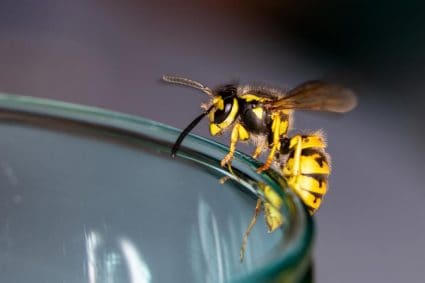
Understanding what tick droppings look like is an important part of protecting yourself and your loved ones from tick-borne diseases. This article will cover everything you need to know about tick droppings, including their appearance, location, potential dangers, and how to safely clean up and prevent them.
Tick droppings, or tick feces, are the waste products left behind after a tick feeds on a host. Given the small size of ticks, it can be inferred that tick droppings would also be quite small. They can contain dangerous bacteria, such as the one causing Lyme disease. As such, they pose potential dangers and need to be safely cleaned up with protective gloves and disinfectants.
What are Tick Droppings?
Tick droppings, also known as tick feces, are the waste products left behind after a tick feeds on a host. As ticks become engorged with blood, they excrete waste, which falls onto the host’s skin. These droppings can contain dangerous bacteria, such as Borrelia burgdorferi, which is responsible for causing Lyme disease.
Appearance of Tick Droppings
The exact color and size of tick droppings are not explicitly mentioned in research. However, given the small size of ticks themselves, it can be inferred that tick droppings would also be quite small.
Where Can You Find Tick Droppings?
Ticks are usually found outdoors in tall grass or bushes. They attach themselves to hosts by waiting on vegetation and latching onto animals or humans that brush against them. Some common areas where ticks may be found include scalp and neck, between legs, behind knees, inside belly button, on underarms, and in folds of skin.
Potential Dangers of Tick Droppings
Tick droppings can pose potential dangers due to the presence of harmful bacteria. One of the primary concerns is the transmission of Lyme disease. It is essential to be cautious when removing a tick from yourself or your pet.
How to Clean Up Tick Droppings Safely
Cleaning up tick droppings requires careful handling to avoid direct contact with the feces. First, wear protective gloves. Spray the area with a bleach solution or an EPA-registered disinfectant, let it soak, then wipe up the droppings and dispose of the waste in a sealed plastic bag. Clean and disinfect surfaces that may have come in contact with the droppings and wash your hands thoroughly afterward.
Preventing Tick Infestations
Preventing tick infestations involves a combination of personal protection and yard maintenance. Use insect repellents, wear protective clothing, and avoid tick-infested areas. Maintain your lawn, create barriers between your lawn and wooded areas, clear tall grasses and brush, discourage unwelcome animals, and seal cracks and crevices in your home’s exterior.
Effective Methods for Tick Control
Effective tick control methods include tick removal using fine-tipped tweezers, tick prevention in the yard, personal protection, regular tick checks, creating a tick-free zone around your house, and consulting a licensed commercial pesticide applicator to apply pesticides to your yard.
In conclusion, while tick droppings might not be a common sign of tick infestations, understanding their potential dangers and how to handle them safely can help protect you and your loved ones from tick-borne diseases. Regular checks and preventive measures are key to maintaining a tick-free environment.
Frequently Asked Questions
What is Lyme disease?
Lyme disease is an infectious disease caused by the bacterium Borrelia burgdorferi. It is transmitted to humans through the bite of infected black-legged ticks. Symptoms can include fever, headache, fatigue, and a skin rash called erythema migrans. If left untreated, the infection can spread to joints, the heart, and the nervous system.
How can I identify a tick?
Ticks are small, spider-like creatures that are usually 3 to 5mm long. They are arachnids, not insects, and are related to spiders and scorpions. They are most commonly brown but can change to a reddish-brown and enlarge up to 10mm when full of blood.
Are all ticks carriers of Lyme disease?
No, not all ticks are carriers of Lyme disease. Only black-legged ticks (also known as deer ticks) are known to transmit Lyme disease.
What should I do if I find a tick on my body?
If you find a tick on your body, you should remove it as soon as possible to reduce the chance of getting infected. Use fine-tipped tweezers to grasp the tick as close to the skin’s surface as possible. Pull upward with steady, even pressure. Don’t twist or jerk the tick; this can cause the mouth-parts to break off and remain in the skin. If this happens, remove the mouth-parts with tweezers. After removing the tick, thoroughly clean the bite area and your hands with rubbing alcohol or soap and water.
How long does it take for a tick to transmit Lyme disease?
According to the CDC, in most cases, the tick must be attached for 36 to 48 hours or more before the Lyme disease bacterium can be transmitted.










